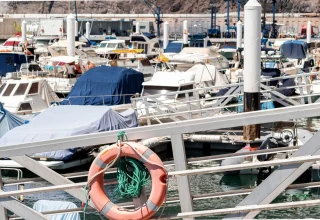Duress alarms have been in existence for many years; they are sometimes referred to as panic buttons and are geared toward human safety, not buildings or other items of property.
In essence, good quality duress alarms allow someone to be notified when a person is in distress. The distress may be because of a medical condition or an injury. It can even be a useful way of allowing employers to know if there is a problem with a lone worker.
The Main Features of Duress Alarms
The exact features of a duress alarm will depend on what its intended use is. For example, a personal duress alarm will have a high-pitched sound to alert people nearby that you’re in danger. This is a standard handheld alarm that’s manually operated in times of danger.
It can be argued that this was one of the original types of duress alarm. Of course, they’ve evolved a lot since then.
-
GPS Tracking
Potentially the most important feature of modern duress alarms is the ability to know where a person is. A duress alarm should have a GPS tracker built into it. This can be operational all the time or activate when the distress call is sent.
If it’s constantly active it’s a good way of keeping tabs on lone employees to help ensure they are safe. But, regardless of whether it’s always active or not, a GPS tracker will tell the emergency response crew where to go. Providing an exact location can make a difference of minutes when finding an injured person. That can be the difference between life and death.
-
Automation
Perhaps the next most important feature of duress alarms is automation. While all duress alarms should have a manual trigger that allows you to send a distress call, the automated feature dramatically increases the safety element.
For example, if you’re alone and you suffer a heart attack or a fall that renders you unconscious, you won’t be able to press the duress button or code.
An automated device will detect the fact you’ve fallen or your heart has stopped and sent the duress call for you. It can make the difference between being discovered in time or not.
Without automation, people may not know of your predicament for an extended period of tie. For example, if your boss checks in with you every hour and you have an accident two minutes after they’ve checked in, you’ll have to wait 58 minutes for anyone to know you have an issue. That’s too long and can seriously affect the outcome of the accident.
-
Customization
The third most important feature is the ability to customize the duress alarm. This will allow you to configure it for your personal situation, ensuring it does it’s best to look after you. The aim customization protocols cover when the duress call should be sent, it’s important to be able to set these parameters yourself as you know the most dangerous situations you face daily.











